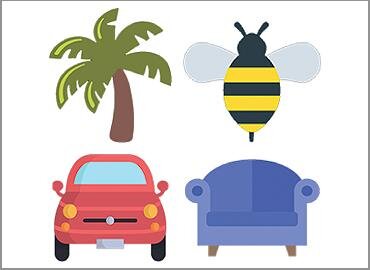
A team of researchers has shown that children’s apparent inability to pay attention allows them to outperform adults when it comes to retaining information they were instructed to disregard.
The researchers’ study shows that, as expected, adults do a great job of focusing their attention on an assigned task and do not pay attention to information they are told to ignore.
Children, on the other hand, take in the secondary information they are instructed to ignore when given the same task. The information is then encoded in their brains.
“What we found is that children’s brains can hold information in a way that adults’ brains do not,” says Yaelan Jung, who worked on the study as a graduate student at the University of Toronto and in her current position as a postdoctoral researcher at Emory University.
“Although it’s not a foreign idea that children have poorer attention abilities than adults, we did not know how this poor attention would impact the way their brains receive and hold other information,” she says. “Our study fills this knowledge gap and shows that children’s poor attention leads them to hold more information from the world than adults.”
The team described their study in a paper published in The Journal of Neuroscience.
In addition to Jung, the authors include: Tess Forest, who also contributed to the study as a graduate student at U of T and in her current position as a postdoctoral research scientist at Columbia University; and Dirk Bernhardt-Walther and Amy Finn—both associate professors in the Faculty of Arts & Science’s department of psychology.
“It’s not simply that children’s ability to pay attention is bad and they’re unable to disregard distractors,” says Finn. “Our study suggests that their brains are built to be sensitive to all information, regardless of whether it’s relevant or not—that kids are more sensitive to more information.
“Depending on your definition of childhood, humans are children for eight or nine years,” she says. “Compared to other species, that’s a long time and one explanation for such a lengthy childhood is that we humans have so much learning to do. Another is that it’s important for our IQ to take in as much information as we do. Still another is that we need to take in all this information as children in order to wire our brains properly, to develop the circuits and pathways for processing information.”
The study involved 24 adults with a mean age of 23 years and 26 children with a mean age of 8 years. The team asked the participants to observe a series of four static illustrations: a bumble bee, a car, a chair and a tree. Each image was accompanied by a background of gray dots moving in one of four directions: up, down, left and right.
In one phase of the study, subjects were instructed to ignore the moving dots and press a button when an object—say, the bumblebee—appeared more than once. In another phase, they were asked to ignore the objects and press a button when the direction of motion of the dots was repeated.
Subjects carried out their task while in a magnetic resonance imaging (MRI) machine at the Toronto Neuroimaging Facility at the University of Toronto. As they performed the task, the MRI measured the subjects’ brain activity which revealed how attention shapes what is represented in subjects’ brains.
“What we found in this study provides a novel way to think about what brain development means,” says Jung. “Often, we assume that as the brain develops it will do more and do things better. Thus, we often think that adults are better and smarter than kids. However, our work shows this is not always the case. Rather, children’s brains may just do things differently than adults—and consequently, they can sometimes do more than adults.”
Added Finn, “The study suggests that this approach of being more sensitive to the broader environment, at the cost of paying attention to specific things, is better for understanding complex systems. It may help form a higher level of understanding of our full environment.
“So, I look at kids as these little information-processing creatures better able to represent more of the world, with brains that more accurately reflect the world than ours.”
More information:
Yaelan Jung et al, Neither Enhanced Nor Lost: The Unique Role of Attention in Children’s Neural Representations, The Journal of Neuroscience (2023). DOI: 10.1523/JNEUROSCI.0159-23.2023
Journal information:
Journal of Neuroscience
Source: Read Full Article






